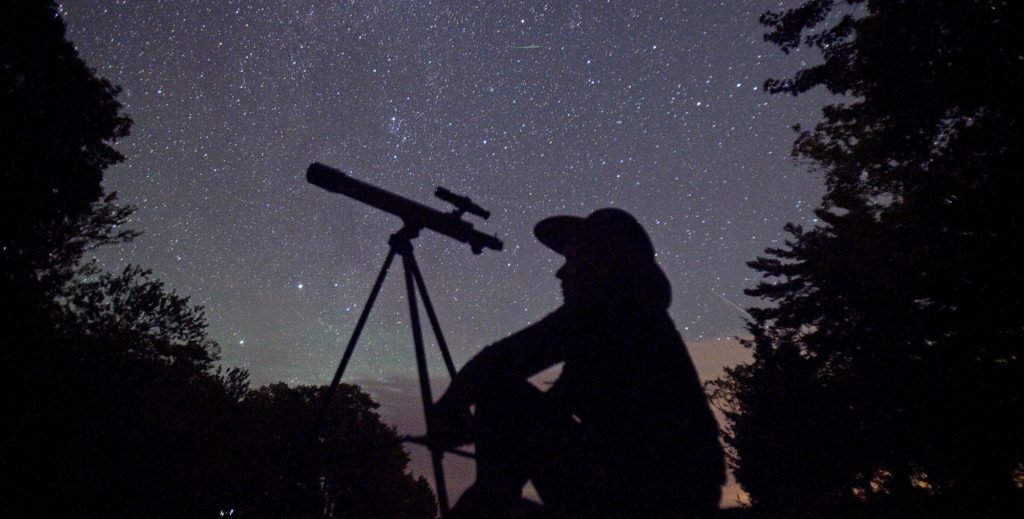Sky Report: March 7-14

This week the moon crosses the winter Milky Way, unfortunately blotting it from view by its bright light, but in its journey it passes near some bright stars and several star clusters. On the 8th it’s precisely midway between the two most famous, and most easily visible, clusters: the Pleiades or Seven Sisters is to the right of the moon and the Hyades to the left of the moon. Each cluster is interesting to the unaided eye, binoculars, and a telescope of any size. The Hyades looks larger mostly because its closer, but in reality the Pleiades is ¼ the diameter of the Hyades.
The orange star Aldebaran is in the middle of the Hyades, but it’s not part of the cluster. It is only half as far away and happens to lie in the foreground in a chance alignment. If Aldebaran were within the Hyades it would look twice as bright as the cluster’s brightest stars.
On the 10th the moon is not far – 4½° or 9 moon-diameters – from another yet more distant star cluster that is barely visible to the unaided eye on the darkest of nights (which tonight is not, courtesy the moon) but which looks nice in binoculars. It’s to the left of the moon at the 10 o’clock position. This cluster goes by the romantic name of M35, its catalog number, and it is a patch of stars roughly the size of the moon in appearance and composed of hundreds of stars 3,000 light years from earth, far beyond the Hyades and Pleiades. You can see M35 and the moon together in most binoculars, at opposite edges of the view.
M35 is in the feet of Gemini. On the 12th the moon has moved to Gemini’s head where it’s almost in line with Castor, high above, and Pollux, only 3° above the moon. Like all stars these are interesting, and Uncle Google can tell you all about them. Castor, by the way, is virtually overhead three hours after sunset.
Venus remains the brilliant “Morning Star” and it’s in the southeast before sunrise. Venus remains the Morning Star until mid-summer, so you have 6 months to enjoy it.
Of current interest is that this month Mars is almost behind Venus and is nearly in line with it, so you can use Venus to find the Red Planet. This week Mars is 4° to the lower right of Venus in the 4 o’clock position. Put Venus in the upper-left edge of your binoculars and Mars will be at the lower right edge. Mars is only 1/200th as bright, but that’s still as bright as the brighter stars, so you’ll have no trouble spotting it. Notice the color contrast: Venus is brilliant white while Mars is distinctly orange.
Saturn is slightly brighter than Mars and it’s about 15° to the lower left of Venus. These two planets will be much closer at the end of the month; more on them then.
Thanks to a 2021 grant from the Utah Governor’s Office of Economic Opportunity and the Kane County Office of Tourism, Stellar Vista Observatory offers portable telescopes and tripod mounted binocular kits on loan for free to all residents of Kane County. Nothing beats a quality binocular or astronomical telescope to enhance enjoyment of the night sky!
Visit https://stellarvistaobservatory.org/discover-the-night-sky/ or Kanab City Library for full details.
The Sky Report is presented as a public service by the Stellar Vista Observatory, a nonprofit organization based in Kanab, Utah, which provides opportunities for people to observe, appreciate, and comprehend our starry night sky. Additional information is at www.stellarvistaobservatory.org. Send questions and comments to John@StargazingAdventures.org.






Comments are closed.